Decolonizing Agriculture
The countryside, providing food for the city, has been the counterpart for the urban development, this inversely proportional balance between environments and resources carved out both urban and rural spaces. Designing for rural areas today means renegotiating these borders. While worldwide rural areas are becoming more and more dependent on technology and tools which belong to the urban development, urban environments are searching for sustainable ways to develop and evolve.
Intervention to build a bottom-up understanding of genetics, engaging farmers through the language of folk crafts
Today most of us live far from food production and agricultural landscape. On one hand, this could be a positive sign: it means that our society is advanced enough to feed everybody with the work of few. On the other hand, this gap is the fertile soil for the proliferation of an image of rural territories which influences directly the contemporary context but has more to do with commercial suggestions, rather than with present or past realities.
In this context, seeds are one of the most critical technology: plant varieties are bred, selected, designed to behave and to produce under certain precise conditions. They can be considered the minimum designed unit which influences and reproduces the condition which is designed for. It is as if the “design” of the aseptic condition of the laboratory has been extended as an ideal environment to the whole agricultural landscape.
In order to introduce a different understanding of seeds, we searched for those practices which shape the landscape and constitute the identity of people living there.
Different kind of folk crafts survived, losing their meaning and becoming a folklore fetish. Nevertheless, folk crafts represent the medium of dialogue to unveil a designed pattern of production and to connect local inhabitants with a common activity.
We worked with embroidery, which is the main craft survived in the case-study area. An embroidered tablecloth illustrating the topic of seeds ownership was the first outcome of this re-appropriation of tools. Produced by farmers, it is the result of a dialogue that connects all the actors and interests of this production chain. The tablecloth serves as a tool to engage on current issues, to have an interaction with those people otherwise excluded from technological innovation. These actors who still have the knowledge of a different culture, increasingly marginal, in which we can trace the roots of our culture but also the possibility of a different one.
Crafts’ languages need to be upset in order to play again a social role, they represent the attitude of a lost world which is now struggling to access new layers of technology: mechanical, chemical and genomic ones. We involved communities through their capabilities to create their own language by using a manufacture, a driver to appropriate and to interpret their reality. The speculative thought of genetic innovations confront with the people, multiplying perspectives and offering other solutions.





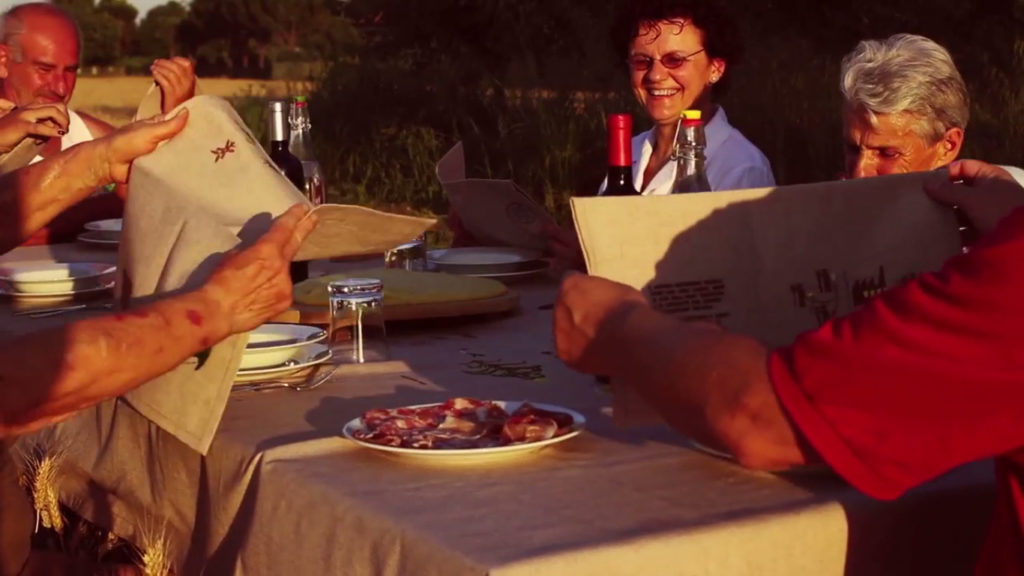
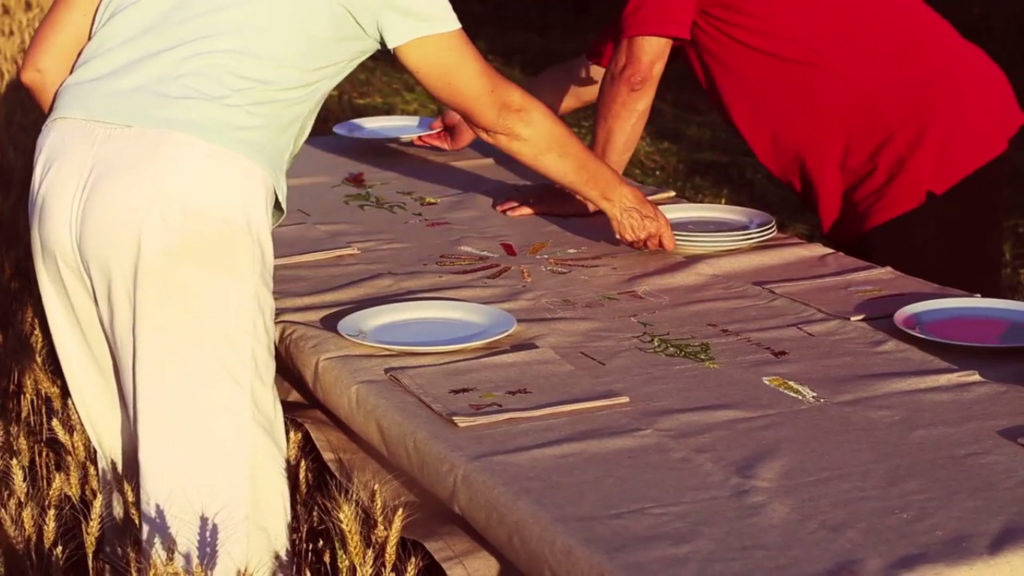
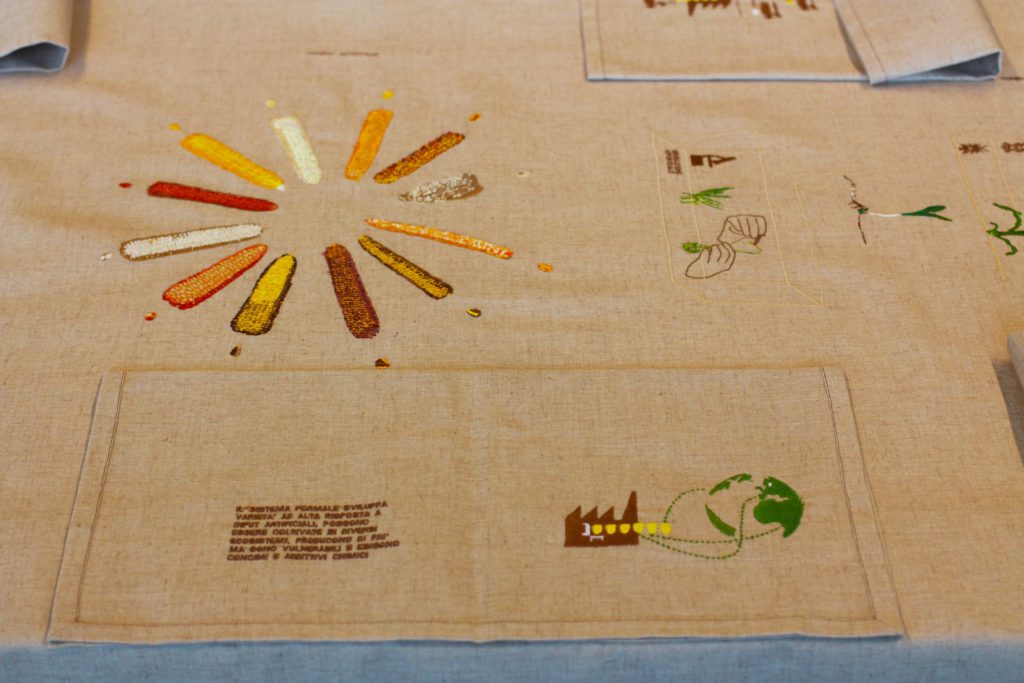
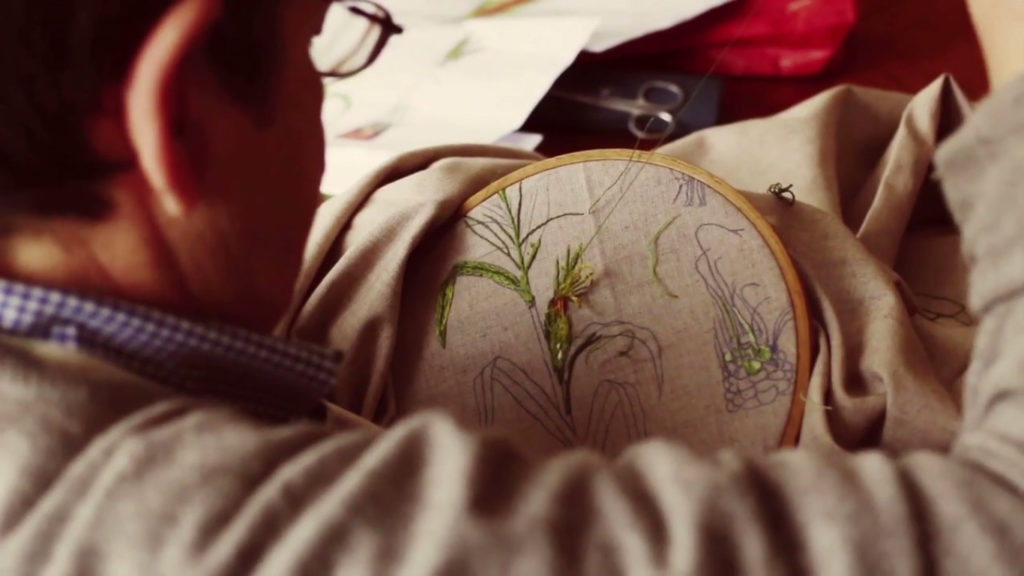
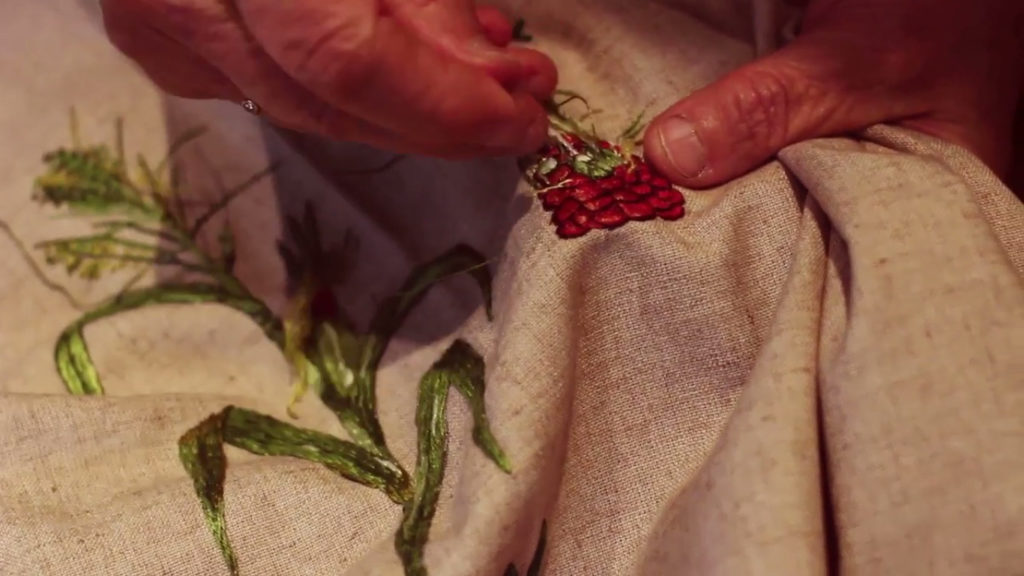
Discussion Decolonizing Agriculture